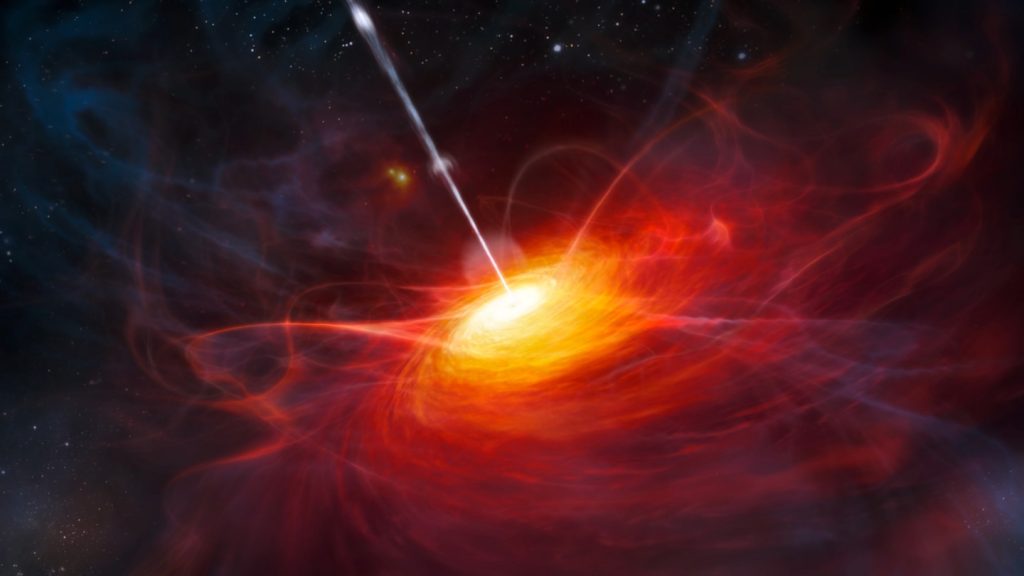The first-ever sighting of starlight from a galaxy hosting one of the most distant quasars known has revealed an intriguing astronomical oddity. Quasars are blazingly bright galactic cores powered by intense heat resulting from gas swirling around massive black holes. The black hole driving a quasar 13 billion light-years from Earth is unique in that it is half as massive as all the stars in its host galaxy, a record high ratio for a quasar host galaxy, as reported by astronomers in a paper submitted to arXiv.org. Previous attempts to view the host galaxy with the Hubble Space Telescope were unsuccessful, prompting astronomers to turn to the James Webb Space Telescope for further investigation.
The quasar, named ULAS J1120+0641 and the fourth farthest known, outshines its galaxy by more than 100 times. This extreme brightness makes it challenging to measure the light from the host galaxy, according to researcher Minghao Yue from MIT. However, due to the 13 billion years it took for the quasar’s light to reach Earth, the light waves have been stretched significantly by the universe’s expansion, resulting in visible light being observed at infrared wavelengths, where JWST conducts most of its observations. The black hole powering the quasar was found to be 1.4 billion times more massive than the sun, consistent with previous estimates, while the host galaxy’s stars total 2.6 billion solar masses.
The relative mass of the black hole in relation to its host galaxy is a notable discovery, with the black hole weighing 54 percent of the galaxy’s stellar mass. This stark contrast to central black holes in modern giant galaxies, which typically account for about 0.1 percent of stellar mass, suggests a different coevolution between black holes and their hosts in the early universe. Harvard University astronomer Avi Loeb believes that the quasar’s radiation may have suppressed star formation in the host galaxy by heating its gas, hindering the collapse of interstellar gas needed to form new stars. However, Loeb predicts that once the quasar shuts off in the future, the surrounding gas will cool, allowing star formation to resume and potentially matching the black hole mass relative to stellar mass in giant galaxies near us.
While the new observations shed light on the dynamic relationship between black holes and their host galaxies in the early universe, the mystery of how these massive black holes grew so quickly after the Big Bang remains unsolved. The observations did reveal another galaxy colliding with the one hosting the quasar, suggesting that the collision could provide additional mass to the black hole and further illuminate the quasar for astronomers to observe from such a vast distance. This collision could potentially explain the rapid growth of the black hole and add insight into the formation and evolution of galaxies in the early universe. The research opens up new avenues for exploration into the complexities of the cosmos and our understanding of the mechanisms at play in shaping the universe we observe today.


